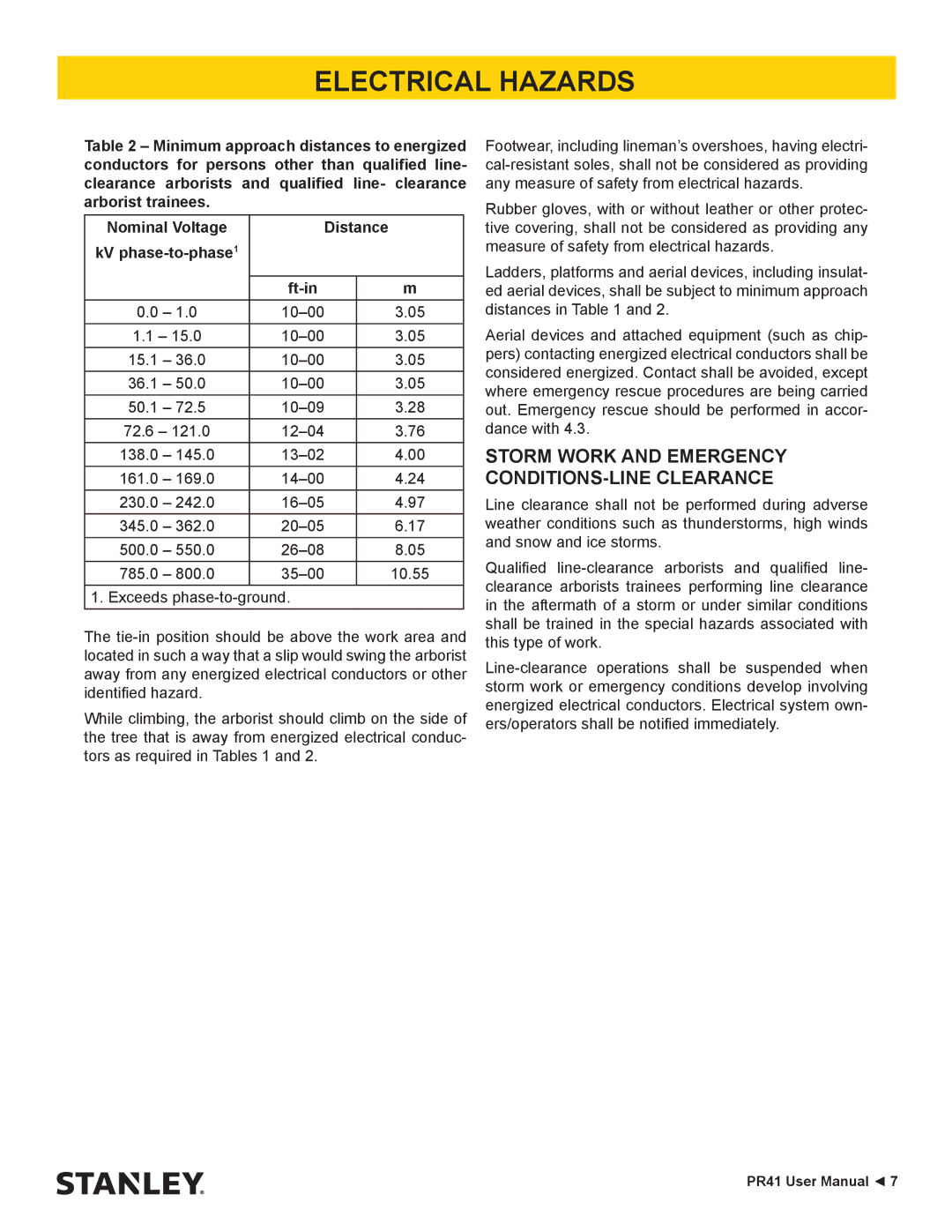
ELECTRICAL HAZARDS
Table 2 – Minimum approach distances to energized conductors for persons other than qualified line- clearance arborists and qualified line- clearance arborist trainees.
Nominal Voltage | Distance |
| ||
kV |
|
|
| |
|
|
|
|
|
|
|
|
| m |
0.0 | – 1.0 |
| 3.05 | |
1.1 – 15.0 |
| 3.05 | ||
15.1 | – 36.0 |
| 3.05 | |
36.1 | – 50.0 |
| 3.05 | |
50.1 | – 72.5 |
| 3.28 | |
72.6 – 121.0 |
| 3.76 | ||
138.0 | – 145.0 |
| 4.00 | |
161.0 | – 169.0 |
| 4.24 | |
230.0 | – 242.0 |
| 4.97 | |
345.0 | – 362.0 |
| 6.17 | |
500.0 | – 550.0 |
| 8.05 | |
785.0 | – 800.0 |
| 10.55 | |
1. Exceeds
The
While climbing, the arborist should climb on the side of the tree that is away from energized electrical conduc- tors as required in Tables 1 and 2.
Footwear, including lineman’s overshoes, having electri-
Rubber gloves, with or without leather or other protec- tive covering, shall not be considered as providing any measure of safety from electrical hazards.
Ladders, platforms and aerial devices, including insulat- ed aerial devices, shall be subject to minimum approach distances in Table 1 and 2.
Aerial devices and attached equipment (such as chip- pers) contacting energized electrical conductors shall be considered energized. Contact shall be avoided, except where emergency rescue procedures are being carried out. Emergency rescue should be performed in accor- dance with 4.3.
STORM WORK AND EMERGENCY CONDITIONS-LINE CLEARANCE
Line clearance shall not be performed during adverse weather conditions such as thunderstorms, high winds and snow and ice storms.
Qualified
PR41 User Manual ◄ 7
